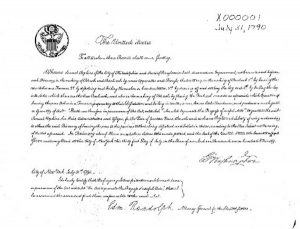 Tuesday June 19th, 2018 goes down in history for the patent world as the day U.S. Patent No. 10,000,000 was granted. The journey from patent No.1 to patent 10,000,000 tells the story of an evolving economy and the technological change that has taken place over more than two centuries.
Tuesday June 19th, 2018 goes down in history for the patent world as the day U.S. Patent No. 10,000,000 was granted. The journey from patent No.1 to patent 10,000,000 tells the story of an evolving economy and the technological change that has taken place over more than two centuries.
Humble Beginnings – Patent #1
The first patent was filed and granted on July 31st, 1790. The title was “The Making of Pot Ash and Pear Ashes”, and it was assigned to Samuel Hopkins.
Million Series Trends:
It has taken nearly 228 years to get from patent #1 to patent #10,000,000. Each millionth series provides insight into the technologies and companies of their day. In light of the ten millionth series starting, a trend analysis of the top ten companies in each series follows.
One Million Series:
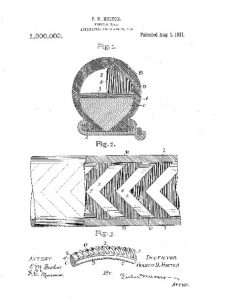 The one millionth patent was granted on August 8th, 1911 after being filed in 1910, and it starts the first millionth patent series. It was titled “Vehicle Tire”, and it was assigned to Francis Holton.
The one millionth patent was granted on August 8th, 1911 after being filed in 1910, and it starts the first millionth patent series. It was titled “Vehicle Tire”, and it was assigned to Francis Holton.
At the time, all of the top ten patent-obtaining companies were U.S. based. The top three were electric companies. Current major businesses like General Electric, AT&T, and General Motors were starting out strong. The number one patent obtainer, General Electric, was granted 7,069 patents, and Kodak at number ten received 1,310 patents. The top company obtained about five times the number of patents as the tenth company. This is the highest multiple of any future series.
Two Million Series:
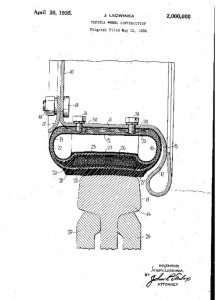 The two millionth patent was granted on April 30th, 1935 after being filed in 1932. The title was “Vehicle Wheel Construction”, and it was assigned to the Edward G. Budd Manufacturing Company.
The two millionth patent was granted on April 30th, 1935 after being filed in 1932. The title was “Vehicle Wheel Construction”, and it was assigned to the Edward G. Budd Manufacturing Company.
The two million series started about twenty-four years after the previous series. Again, the top ten patent-obtaining companies were predominantly U.S. based. However, there was one Japanese company, Toshiba, which made it to number four. General Electric continued to be number one as their dominance grew, and they were granted 18,617 patents. In the tenth position, Bendix Aviation received 3,971 patents. The top company obtained over four and a half times the number of patents as the tenth.
Three Million Series
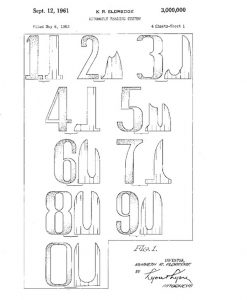 The three millionth patent was granted on September 12th, 1961 after being filed in 1955. It was titled “Automatic Reading System”, and it was assigned to General Electric.
The three millionth patent was granted on September 12th, 1961 after being filed in 1955. It was titled “Automatic Reading System”, and it was assigned to General Electric.
The three million series started about twenty-six years after the second. In this series, the patent-obtaining leaders mostly shifted ranks in the top ten, but there were three new companies on the list. The most surprising of them being the U.S. Government at the number three spot. Japan remained the only non-U.S. country to have a top ten company, Toshiba. Dupont was number one with 13,776 patents, and Conoco at number ten received 4,773 patents. The top company obtained about three times the number of patents as the tenth.
Four Million Series:
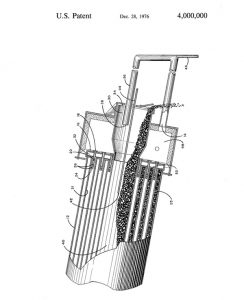 The four millionth patent was granted on December 28th, 1976 after being filed in 1974. The patent was titled “Process for Recycling Asphalt-Aggregate Compositions”, and it was assigned to Robert L. Mendenhall.
The four millionth patent was granted on December 28th, 1976 after being filed in 1974. The patent was titled “Process for Recycling Asphalt-Aggregate Compositions”, and it was assigned to Robert L. Mendenhall.
The four million series started about thirteen years after the third. Major changes in this series make it a transitional period. A notable fact is that the time to grant a million patents was cut in half during the three million series, so the four millionth patent arose much quicker than expected based on previous series.
Another notable change is that only four of the companies were based in the U.S., compared to nine in the previous series. There were three Japanese and three European companies added to the list. Japanese companies continued expanding to the U.S., and European companies had a unique boom into the top ten that will not be seen again. The U.S. Government was number one with 13,058 patents, and MSSA at number ten received 6,260 patents. The top company obtained about two times the number of patents as the tenth.
Five Million Series:
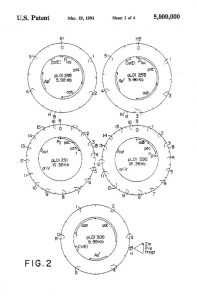 The five millionth patent was granted on March 19th, 1991 after being filed in 1989. It was titled “Ethanol Production by Escherichia Coli Strains Co-Expressing Zymomonas Pdc and Adh Genes”, and it was assigned to the University of Florida.
The five millionth patent was granted on March 19th, 1991 after being filed in 1989. It was titled “Ethanol Production by Escherichia Coli Strains Co-Expressing Zymomonas Pdc and Adh Genes”, and it was assigned to the University of Florida.
The five million series started about fifteen years after the fourth. This series was dominated by Japan as they kicked out every European company from the top ten. Seven out of the top ten companies were Japanese and they held the top two positions. Here the U.S. government made its last appearance in the top ten for the rest of the series. Canon was number one with 12,056 patents, and Fujifilm at number ten received 7,117 patents. The top company obtained over one and a half times the number of patents as the tenth.
Six Million Series:
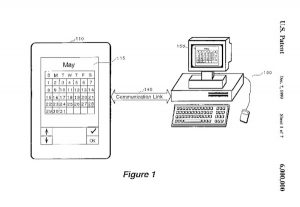 The six millionth patent was granted on December 7th, 1999 after being filed in 1998. It was titled “Extendible Method for Synchronizing Multiple Files on Two Different Computer Systems,” and was assigned to Access Co. Ltd.
The six millionth patent was granted on December 7th, 1999 after being filed in 1998. It was titled “Extendible Method for Synchronizing Multiple Files on Two Different Computer Systems,” and was assigned to Access Co. Ltd.
The six million series started about eight years after the fifth. This series shows another change in patenting frequency. A notable fact is that the time to grant one million patents was cut in half again in the five million series, so the sixth millionth patent arose much quicker than expected based on previous series. This is the first series where a South Korean company, Samsung, took a spot in the top ten. Japanese companies still held half of the top ten spots leaving the U.S. companies with four. Canon held the number one spot still at 12,834 patents, and Toshiba at number ten received 8,439 patents. The top company obtained about one and a half times the number of patents as the tenth. This is the smallest multiple of any past or future series.
Seven Million Series:
 The seven millionth patent was granted on February 14th, 2006 after being filed in 2001. It was titled “Polysaccharide Fibers”, and it was assigned to E. I. Du Pont De Nemours and Company.
The seven millionth patent was granted on February 14th, 2006 after being filed in 2001. It was titled “Polysaccharide Fibers”, and it was assigned to E. I. Du Pont De Nemours and Company.
The seven million series started about seven years after the sixth. Samsung, a South Korean company, lead a series for the first and only time. Again, half were Japanese companies leaving four spots to U.S. companies. During this series, more consumer electronics companies entered the top ten, compared to earlier series. The number one company obtained about 6,000 more patents than the previous series. There hasn’t been this large of a jump since the move from the first series to the second. Samsung was number one with 18,836 patents, and General Electric at number ten received 7,997 patents. The top company obtained almost two and a half times the number of patents as the tenth.
Eight Millionth Series:
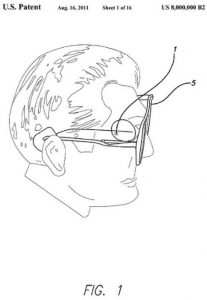 The eight millionth patent was granted on August 16th, 2011 after being filed in 2007. It was titled “Visual Prosthesis”, and it was assigned to Second Sight Medical Products Inc.
The eight millionth patent was granted on August 16th, 2011 after being filed in 2007. It was titled “Visual Prosthesis”, and it was assigned to Second Sight Medical Products Inc.
The eight million series started about six years after the seventh. This series puts the U.S. back in the number one position. More consumer electronics companies made it into the top ten list during this time period. Japan had four leaders, and South Korea had one, leaving the U.S. with five. IBM was number one with 19,115 patents, and Alphabet at number ten received 8,058 patents. The top company obtained almost two and a half times the number of patents as the tenth.
Nine Millionth Patent:
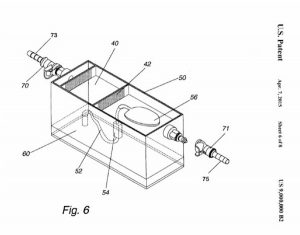 The nine millionth patent was granted on April 7th, 2015 after being filed in 2013. It was titled “Windshield Washer Conditioner”, and it was assigned to Wiperfill Holdings.
The nine millionth patent was granted on April 7th, 2015 after being filed in 2013. It was titled “Windshield Washer Conditioner”, and it was assigned to Wiperfill Holdings.
The nine million series started about four years after the eighth. This is the first series since the third series where more than half of the top ten companies were U.S. based. Only two were Japanese and two were South Korean. The U.S. held the top position again. The number of patents for the leader grew by over 7,000 from the eighth series. A similar jump has not been seen since the one from the sixth to the seventh series. IBM was number one with 26,261 patents, and Sony at number ten received 7,687 patents. The top company obtained about three and a half times the number of patents as the tenth.
Ten Millionth Patent:
On Tuesday June 19th, 2018, the ten millionth patent was granted, after being filed in 2015. Lucky number ten million is titled “Coherent Ladar Using Intra-Pixel Quadrature Detection,” and is assigned to Raytheon. Cutting edge technology has come a long way from the first patent for making pot ash.
Conclusion:
While each series has its own unique elements, overall trends appear when they are reviewed together. Initially, the U.S. companies dominated the top ten, but Japan quickly took over the middle series. The U.S. made a small comeback in the last two series, and it may continue in the next one. The time it takes to grant one million patents is shortening. It originally was around a twenty-year span, then thirteen years, and now it is less than five years. Patent No. 10,000,000 was only three years after Patent No. 9,000,000 was granted. The number of patents that the top ten group receives is growing as a whole. The top company’s total patents grew significantly in the nine million series compared to the eighth, so it will be interesting to see if that trend continues. Finally, the types of companies shifted from electric, chemical, and automotive companies to mostly computer hardware and software companies. It will be interesting to see whether these trends will continue with the ten million series and whether any new trends develop, but it will be about three years until the world finds out.

![[IPWatchdog Logo]](https://ipwatchdog.com/wp-content/themes/IPWatchdog%20-%202023/assets/images/temp/logo-small@2x.png)

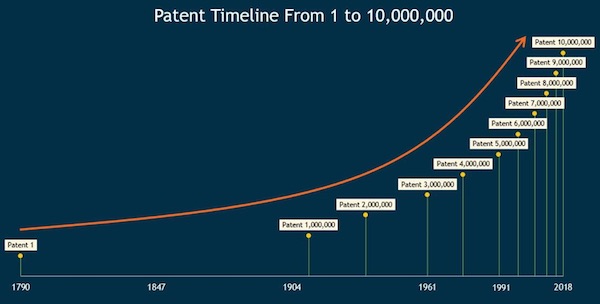
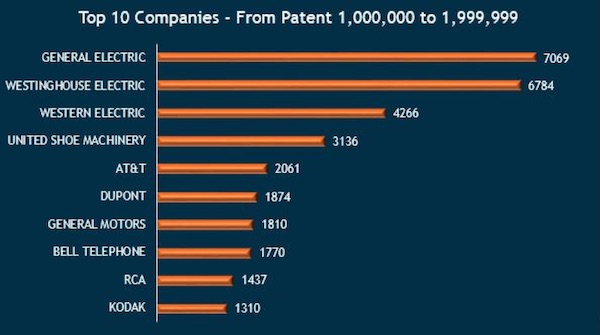
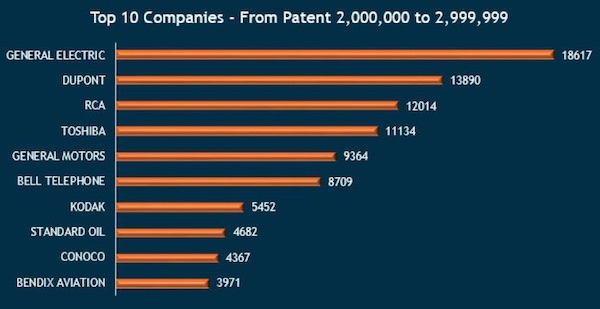

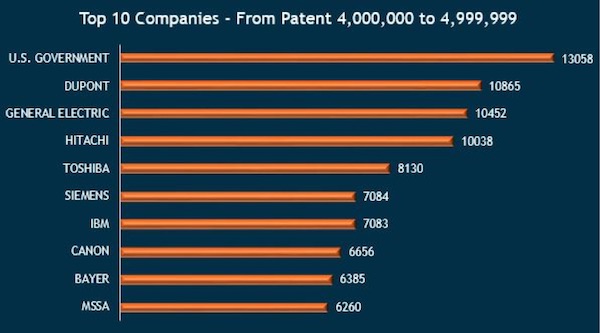
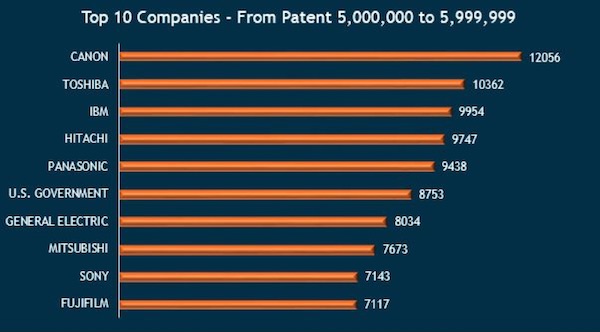
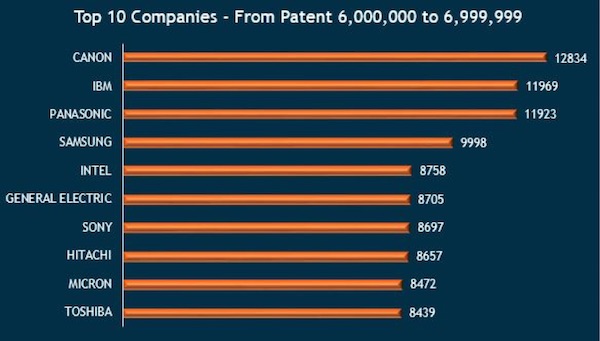
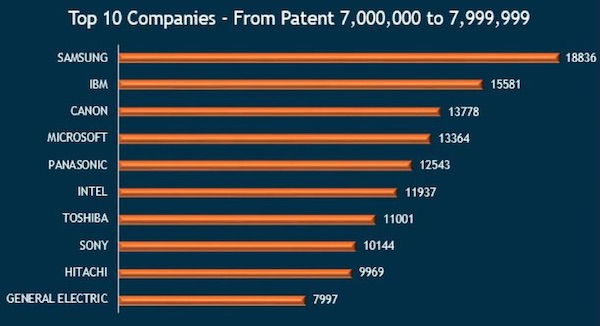
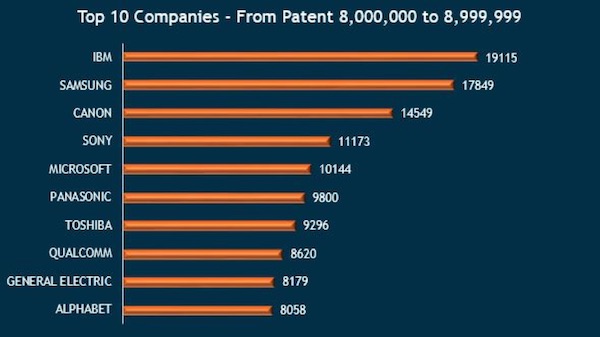

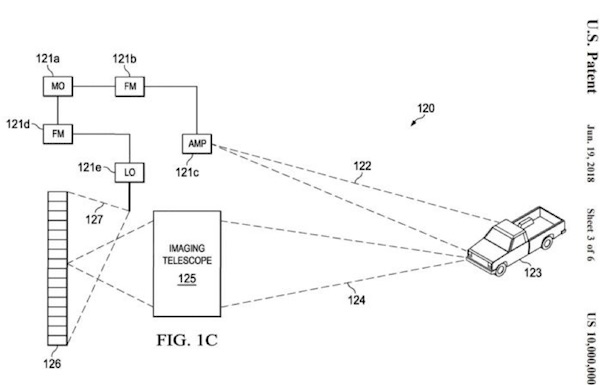

![[Advertisement]](https://ipwatchdog.com/wp-content/uploads/2024/04/UnitedLex-May-2-2024-sidebar-700x500-1.jpg)
![[Advertisement]](https://ipwatchdog.com/wp-content/uploads/2024/04/Artificial-Intelligence-2024-REPLAY-sidebar-700x500-corrected.jpg)
![[Advertisement]](https://ipwatchdog.com/wp-content/uploads/2024/04/Patent-Litigation-Masters-2024-sidebar-700x500-1.jpg)

![[Advertisement]](https://ipwatchdog.com/wp-content/uploads/2021/12/WEBINAR-336-x-280-px.png)
![[Advertisement]](https://ipwatchdog.com/wp-content/uploads/2021/12/2021-Patent-Practice-on-Demand-recorded-Feb-2021-336-x-280.jpg)
![[Advertisement]](https://ipwatchdog.com/wp-content/uploads/2021/12/Ad-4-The-Invent-Patent-System™.png)






Join the Discussion
5 comments so far.
angry dude
June 29, 2018 08:33 amThis story should read like this:
US Patent System – from protecting individual inventor to securing monopolistic grab on future tech by a mega-billion corporation with deep roots in US government
Sad, very sad
Mind you, Raytheon does not need patents to survive and prosper
It’s a money printing machine supported by US taxpayers
Night Writer
June 28, 2018 10:13 am@2 Benny
Your posts are always just absurd. Did I say discriminate? You just make up nonsense to blow smoke to try and confuse people that aren’t family with patents.
Your posts are psychotic.
Anon
June 28, 2018 08:17 amBenny,
Night Writer’s comment has less to do about discriminating between the awarding of patents to US or non-US inventors and more to do with the underlying anti-patent zeitgeist that more directly affects the small inventor who is more likely (given general market conditions) to only file locally.
I believe that you have missed the point of his post.
Benny
June 28, 2018 05:11 amNight,
The US patent system does not discriminate between US and non-US inventors, nor is there any reason why such discrimination should take place. Would you further like to discriminate inventions made in the US by non-US citizens, or inventions made in the US assigned to non-US companies?
On another note, it is almost comical that patents number 1, 1000000 and 2000000 were granted for inventing, er, the wheel.
Night Writer
June 27, 2018 12:04 pmI would like to see a chart of original utility filing from inventions made in the US.
I think this number has been dropping and is the prime number that the patent system is supposed to encourage.